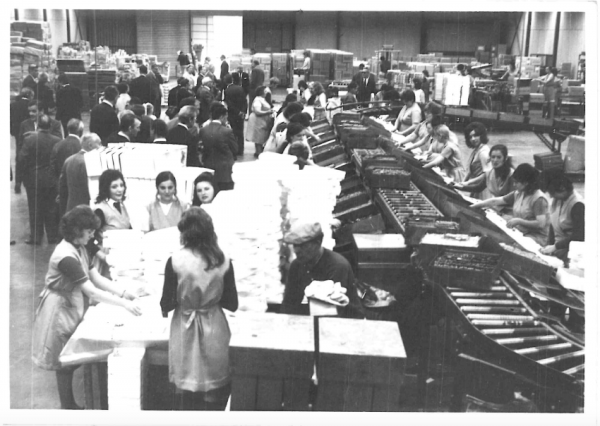About the Desobry biscuit factory
It all started in 1947…
It all started in 1947, when Léon Desobry began baking to his own delicious recipes at his factory. Even then people said that when he was cooking his treasures in the rear-shop, the smell of chocolate and biscuits spear throughout the whole neighbourhood. Without knowing it, he created biscuits that would be universally enjoyed in more than 40 countries, for over half a century!

After being sold to different companies, the Desobry brand becomes Belgian again in the year 2000.
This is a new start for the company and the new Belgian management decides to improve processes, quality and the company culture is focused on innovation.
Today, Desobry is a biscuit company that sells in more than 40 countries, present in the biggest distribution channel brands, end produces more than 45 biscuits. The company is very innovative, as well in developping new biscuits (ganache, perles, craquants) as in new packaging (snacking, Luxury Boxes, Moment Box).
Desobry biscuits, which biscuit are regarded as among the most delicious in the world, are authentic premium Belgian products, made at our biscuit factory in Tournai, with real Belgian chocolate.
A little Belgian biscuit, a great food family
Belgium has an impressive gastronomic history: beer, chocolate, speculoos, waffles (Liège-style or Brussels-style), waterzooi, chips, etc.
How can such a small country produce so many different flavours? We don’t know the answer to that question. One thing that is certain is that Belgians love the good things in life, and lovers are passionate people …
Biscuit maker Desobry is proud to belong to that family of enthusiasts and to make its contribution to the culinary arts of Belgium. You only need to taste one of our delicious Belgian biscuits to testify to that.
The history of Belgian chocolate
Shortly after the discovery of America by Christopher Columbus, another Spanish explorer, Hernán Cortés, reached Mexico and was given cocoa beans by the local people, the Aztecs.
He sailed back to Europe with his holds full of cocoa beans. Following his return, the cocoa-flavoured drink quickly became popular among the Spanish aristocracy and the clergy, and it remained a well-kept secret in the upper realms of Spanish society.
In the early 17th century an Italian merchant, Francesco Carletti, revealed the Spanish secret after tasting a similar drink in South America. The secret then spread rapidly throughout Europe.
In those days the cities of Bruges, Ghent and Antwerp were under Spanish rule and were governed by Charles the Fifth. The cocoa beans passed through the Belgian ports on their way to the rest of the Europe, and Belgian confectioners were soon able to access this new resource.
Drawing on their creativity and talent, they created their own chocolate recipes. That is how Belgian chocolate originated.

